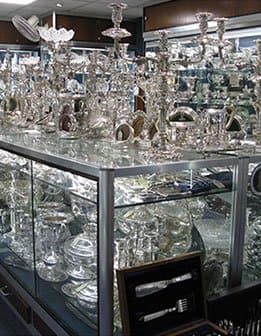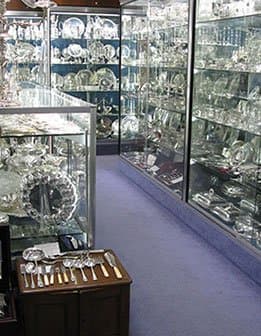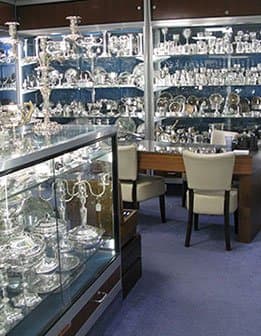Hallmarks & Heritage
Reading the Story of Silver:
When you pick up a piece of antique silver, you are holding history in your hands. But to truly unlock its story, you need to understand its hallmarks. More than decorative symbols, these small stamps are the collector’s key to authenticity, age, and craftsmanship.
What is a Hallmark?
A hallmark is an official mark struck onto silver to certify its purity. The tradition of hallmarking in Britain stretches back over 700 years, with the first legislation introduced in 1300. These marks remain one of the oldest forms of consumer protection, guaranteeing that silver meets legal standards.

The components of a British Hallmark
A full hallmark usually contains several symbols, each revealing part of the object’s story:
- The Standard Mark – such as the lion passant, which certifies sterling silver (.925 purity).
- The Assay Office Mark – showing where the silver was tested and marked. London (leopard’s head), Birmingham (anchor), Sheffield (crown), and Edinburgh (castle) are the most common.
- The Date Letter – a changing letter (with variations in font, case, and shield shape) that identifies the exact year of assay.
- The Maker’s Mark – the initials or symbol of the silversmith or firm responsible for the piece.
Why Hallmarks Matter
Hallmarks are not only practical but also fascinating. They:
- Authenticate a piece of silver, proving its purity.
- Allow collectors to date and place an item precisely.
- Reveal the name of the maker, connecting the object to an individual craftsman or workshop.
- Protect buyers and collectors from imitation or fraud.
For the historian and the collector alike, they transform an object from beautiful silverware into a documented piece of history.
Examples in our Collection
At William Walter Antiques, we see daily how hallmarks bring silver to life:
– A pair of Georgian salt cellars with a crisp London leopard’s head tells us not only where it was assayed but also pinpoints its creation to a year in the late 1800’s.
– A Victorian vinaigrette bearing Birmingham’s anchor and a date letter links it to the height of the Industrial Revolution, when Birmingham was a hub of silver production.
– A 20th-century piece may carry more modern marks, yet still connects directly to the centuries-old tradition of British hallmarking.
Conclusion
Hallmarks are far more than small stamps, they are the silver collector’s map to authenticity, craftsmanship, and heritage. By learning to read them, you uncover stories of makers, cities, and centuries past.
Whether you are starting a collection or deepening your knowledge, hallmarks are an invaluable guide. If you would like advice on identifying a hallmark or wish to explore silver from a particular era, we would be delighted to help.
Browse our collection or get in touch to begin your journey into the rich heritage of antique silver.
Our Makers
An A to Z list of silversmiths featured on our website
About Us
If you see something in Archive that you would have liked please contact us as we might be able to source
Our Store
Our store is situated in vaults 3 and 5 on the right-hand side of the main corridor at The London Silver Vaults





